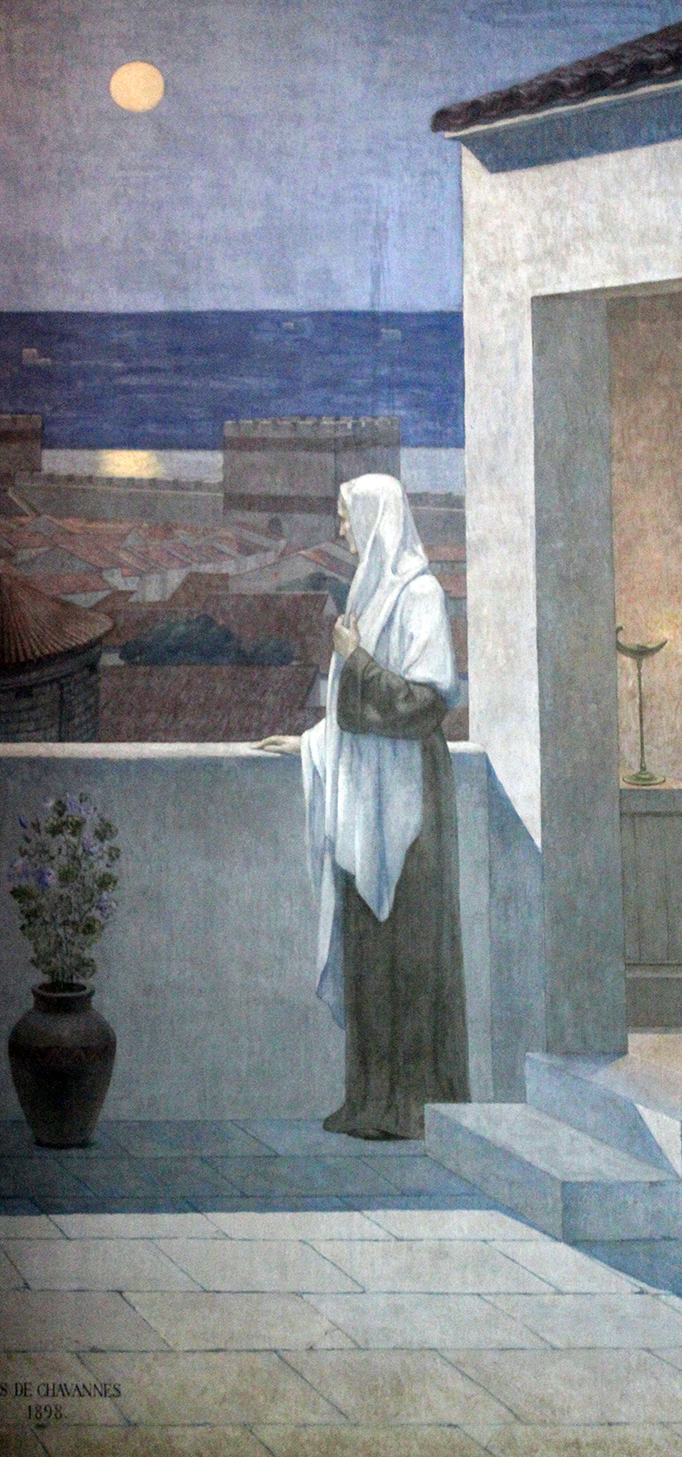Remembering St. Genevieve’s Bravery in the Face of Adversity
As we celebrate the 1600th anniversary of the Patron Saint of Paris, her testimony remains a source of inspiration for all Christendom.


Born around 420 in Nanterre (near Paris) in a family of patricians, she dedicated herself to God through a vow of virginity from an early age. She moved to Paris at her parents’ death as a consecrated person, leading at the same time a life of prayer and contemplation, while carrying out a local political mission inherited from her family and taking care of the needy.
She entered history at age 30 when, in 451, the Huns led by Attila threatened to invade the city after attempting to conquer numerous parts of Europe. At the risk of her life, Genevieve convinced the panic-stricken people of Paris not to run away and give their home up to the invader but to stay and pray. The city was eventually spared by the Huns after Attila suddenly changed his path. The Parisians then proclaimed Genevieve Defensor Civitas — that is, in charge of the protection of the city.
She distinguished herself again when Germanic king Childeric I besieged the city in 476. While famine was gaining ground, she went on a boat expedition from the Seine to the Aube to collect food and ensure the resupplying of the city.
According to several historians, Genevieve strongly contributed to King Clovis’ conversion as she was a close adviser to his wife Queen St. Clotilde. To this extent, she is said to have played a major role in the Christianization of France.
Saint Genevieve died at an advanced age in 502, leaving behind a testimony of faith that animated the hearts of countless faithful in France and beyond up to the present day. Until the French Revolution, it became a custom for Parisians to hold solemn processions with Genevieve’s relics in case of natural disasters, epidemies or invasions.
She is the Patron Saint of Paris and the Diocese of Nanterre, as well as of the National Gendarmerie. The shrine containing her relics is kept in the Church of Saint-Etienne-du-Mont, in the 5th District of Paris, near the Panthéon.
“A woman of confidence in the face of adversity, she has been able to combine her faith with political and social action in the service of the common good, which remains a source of inspiration for all,” Archbishop of Paris Michel Aupetit wrote in a recent editorial for the catalogue of the ongoing commemorative exhibition “Genevieve 1600” in the town hall of the 5th District of Paris. “The Catholic Church in Paris will be particularly committed in this year of the 1600th anniversary of her birth to share with all the treasure she carried in her heart.”
The opening of the diocesan year will take place Jan. 11, at the end of a novena prayer — started on the day of her feast, Jan. 3 — during which a Mass is celebrated every day in the different dioceses that are linked in some way to her history.
The diocesan gathering and solemn vespers presided over by Archbishop Aupetit on the afternoon of Jan. 11 will be followed by a St. Genevieve procession and the blessing of Paris. At the end of the celebrations, the representatives of the different parishes and communities of the diocese will be given the “Candle of St. Genevieve.” This famous attribute of the saint refers to a stormy night during which she walked to the Basilica of Saint-Denis with a candle that miraculously rekindled each time the wind blew it out.
- Keywords:
- france
- paris
- st. genevieve
















